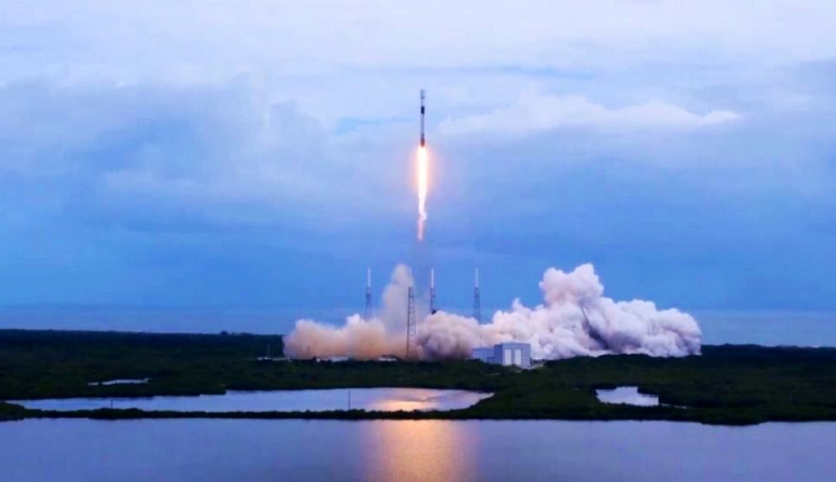SpaceX has successfully launched 60 additional Starlink internet relay satellites using its Falcon 9 rocket on Saturday, Oct. 24. According to MSN's latest report, the goal of the space mission is to boost the company's planned constellation for thousands of satellites for its global high-speed internet.

Congratulations SpaceX Team, Elon Musk and Gwynne Shotwell on #Falcons 100th successful mission since 2008! How very exciting and what an incredible milestone to reach @SpaceX. What an awesome view as the sunlight hitting those 60 Starlink Satellites..@elonmusk pic.twitter.com/FU8zyYdvyy — Stacey (@StaceyR28715306) October 25, 2020
SpaceX's total number of Starlink satellites is now 895. Although the space company's Falcon 9's twice-flown first stage was delayed for two days because of an on-board camera issue, the 229-foot-tall spacecraft was still able to launch away from pad 40 at Cape Canaveral Air Force Station.
This is SpaceX's 19th launch this year of 2020 and its 15th Starlink flight.
SpaceX's latest Starlink mission
The space launch went pretty smooth as Falcon 9 carefully reaches the Earth's lower atmosphere. As usual, the rocket's first stage flew back to the planet and landed on an off-shore drone ship.
Falcon 9 launches 60 Starlink satellites – one step closer to providing high-speed broadband internet to locations where access has been unreliable, expensive, or completely unavailable pic.twitter.com/3J06rSFBqm — SpaceX (@SpaceX) October 18, 2020
All 60 satellites were successfully released on their own, marking Elon Musk's space agency's 95th successful Falcon 9 flight. Overall, there are already 100 successful flight. Because of its regulatory approval, SpaceX can launch more than 12,000 small satellites in multiple orbital planes.
3% of SpaceX's Starlinks already failed
Previously, experts suggested that SpaceX's Starlink satellites might become space junks, increasing the artificial debris outside Earth's atmosphere. Universe Today reports that about 3% of Starlinks already failed. These satellites are already unresponsive and are not maneuvering in orbit.

Congratulations SpaceX Team, Elon Musk and Gwynne Shotwell on #Falcons 100th successful mission since 2008! How very exciting and what an incredible milestone to reach @SpaceX. What an awesome view as the sunlight hitting those 60 Starlink Satellites..@elonmusk pic.twitter.com/FU8zyYdvyy — Stacey (@StaceyR28715306) October 25, 2020
This was caused by Radio Frequency Interference (RFI), light pollution, and other factors that could lead to failure. Because of these, some of the satellites are now unresponsive and are not maneuvering in orbit. Scientists are now concerned since the Starlinks could be dangerous to other active spacecraft and satellites that are orbiting the Earth.
For more news updates about SpaceX or other space agencies, always keep your tabs open here at TechTimes.
Related Article : Oreo Stores Cookies in Almost 'Indestructible' Vault Just In Case Asteroid Hits Earth Next Month
This article is owned by TechTimes,
Written by: Giuliano de Leon.

![Apple Watch Series 10 [GPS 42mm]](https://d.techtimes.com/en/full/453899/apple-watch-series-10-gps-42mm.jpg?w=184&h=103&f=9fb3c2ea2db928c663d1d2eadbcb3e52)


